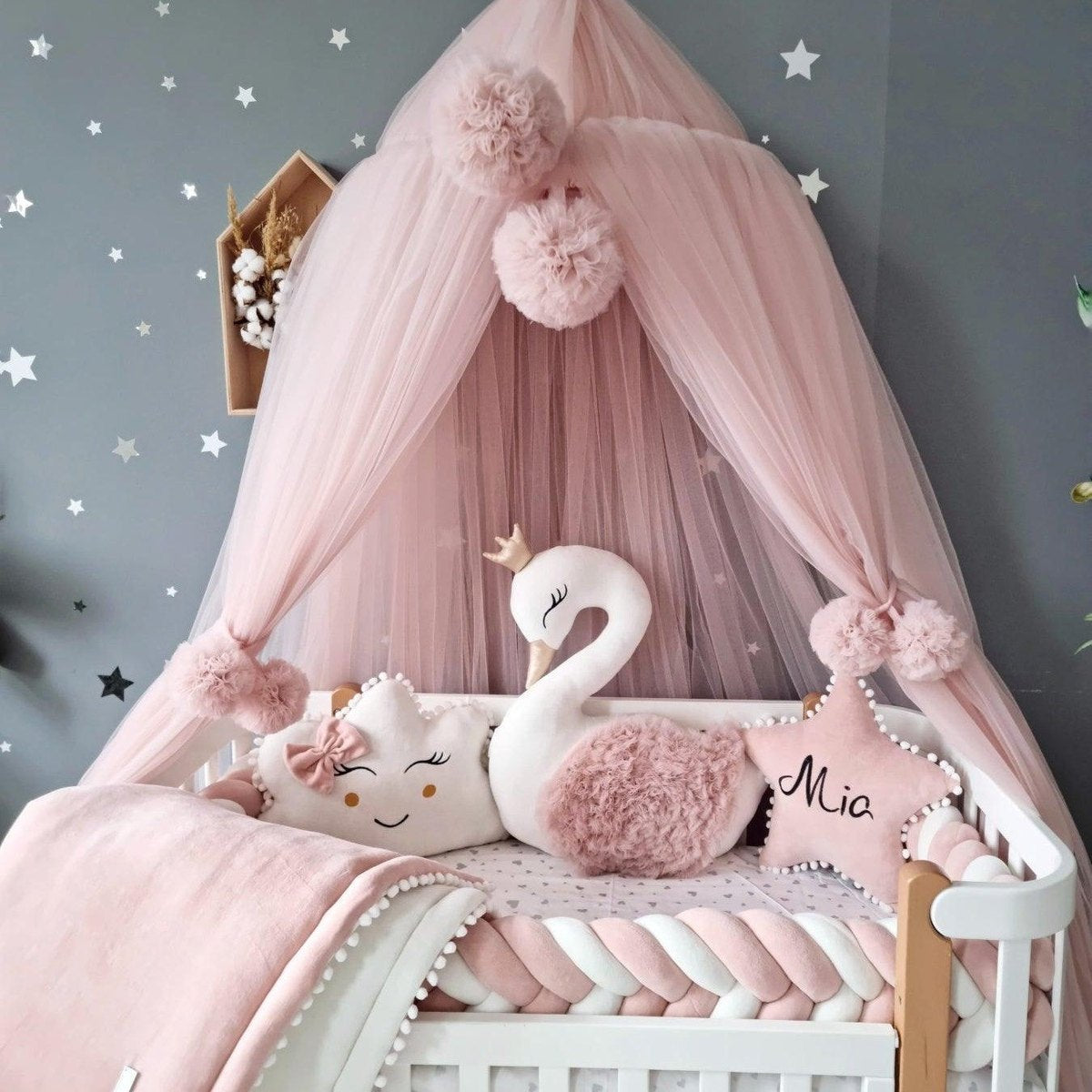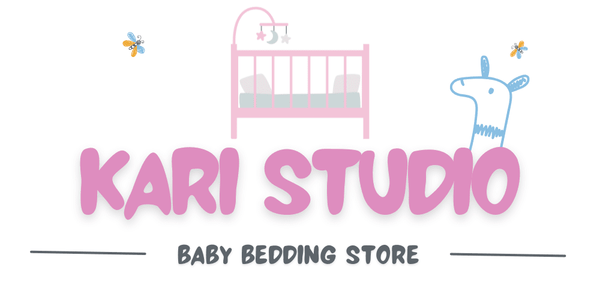Choosing the right crib bumper for your baby’s nursery can feel overwhelming, especially with ongoing concerns about safety. A crib bumper, designed to cushion the crib’s sides, aims to protect infants from bumps and bruises. However, crib bumpers have received significant attention regarding safety risks such as Sudden Infant Death Syndrome (SIDS). This article offers a complete guide covering crib bumper types, materials, safety considerations, installation advice, and safer alternatives so parents can make informed decisions about the best crib bumper options for their newborns.
Understanding Crib Bumpers: Types and Designs
Common Types of Crib Bumpers
Crib bumpers come in various styles and designs, each with distinct features. The most common include:
- Traditional padded crib bumper pads: Soft, cushioned pads lining the crib’s interior to buffer against hard crib sides.
- Braided crib bumpers: Made of intertwined fabric tubes creating a plush, decorative barrier commonly called braided pillow bumpers or braided crib liners.
- Knotted crib bumpers: Constructed with fabric knots or puffy quilted sections for a textured look and flexible protection.
- Rope or braided rope crib bumpers: Rope-style bumpers with a thick, soft form, sometimes double braided for extra cushioning.
Design Variations and Aesthetics
Parents can choose from a braided cushion for crib or a knotted bumper for crib, both bringing unique nursery decor charm. Some prefer a crib bumper cushion for added softness, while others want a slim crib bumper cover for light protection. Designs vary from solid colors to patterns that match nursery themes, allowing the creation of a cohesive and stylish crib bumper set. Regardless of style, the focus must always be on safety.
Safety Concerns: Crib Bumpers and SIDS Risks
Why Are Crib Bumpers Considered Dangerous?
The American Academy of Pediatrics (AAP) advises against using padded crib bumpers due to potential hazards. Crib bumpers can pose risks including suffocation, entrapment, and strangulation, all factors linked to crib bumpers and SIDS.
Research indicates that crib bumpers unsafe usage increases the risk of Sudden Infant Death Syndrome and other sleep-related infant deaths. For this reason, many pediatricians recommend avoiding traditional crib bumper pads altogether, especially for newborns and infants under one year.
Recognizing Unsafe Crib Bumpers
Not all crib bumpers carry the same risk. Crib bumpers dangerous to newborns often:
- Are overly padded or thick, restricting airflow
- Have loose ties or attachments that may become choking hazards
- Are made of non-breathable materials
- Have gaps allowing limbs to become trapped
Choosing crib bumpers safe by design and certified by safety standards is critical for peace of mind.
Materials Matter: Choosing Safe and Comfortable Fabrics
Breathable and Natural Fabrics
Material choice affects both safety and comfort. Many parents seek crib bumper pads made from organic cotton or breathable fabrics that reduce suffocation risks. Natural fibers promote airflow, wick moisture, and tend to be hypoallergenic, offering a safer sleeping environment.
Innovations in Crib Bumper Materials
Recent advancements include mesh crib liners and braided bumper crib options fabricated from lightweight, ventilated textiles. Braided crib protector designs often use removable, washable covers for hygiene. Wool crib bumpers are another alternative, known for temperature regulation and natural antimicrobial properties, although less common.
Installation Tips for Safe Use
Proper Installation Techniques
If parents opt for crib bumpers, correct installation is essential to avoid risks. Here are tips for installing a crib bumper pad set safely:
- Ensure the bumper is firmly tied to crib slats using secure ties or fasteners to prevent sagging.
- Check periodically for loosening or displacement, especially after washing or moving the crib.
- Only use bumpers with breathable fabrics and minimal padding thickness.
- Avoid covering the entire crib with bumpers; partial side coverage reduces suffocation risks.
- Follow manufacturer instructions carefully for any braided bumper or knotted bumper for crib models.
Maintenance and Inspection
Regularly inspect crib bumpers for wear and tear, including loose ties, holes, or compressed foam that could compromise safety. Wash removable covers frequently to maintain hygiene and remove allergens.
Safe Alternatives to Traditional Crib Bumpers
Mesh and Crib Liners
Mesh crib liners are often touted as a safer alternative to padded bumpers. They prevent limb entrapment without adding bulky padding, allowing better airflow and lowering suffocation risk. Non-padded mesh crib liners meet safety standards such as ASTM F1917 and are recommended by safety experts.
Other Protective Options
- Wearable blankets and sleep sacks: Provide warmth without loose blankets or bedding that can pose risks.
- Fitted crib sheets and mattress pads: Ensure a snug sleeping surface, reducing the need for side protection.
- Crib rail covers: Protect against teeth marks and minor bumps without surround padding.
Exploring these alternatives can provide peace of mind while keeping the nursery safe for newborns and infants.
Choosing the Best Crib Bumper: Expert Recommendations
What to Look for When Buying a Crib Bumper
If you decide a crib bumper is right for your nursery, keep these considerations in mind for finding the best crib bumper:
- Opt for breathable materials, such as cotton or mesh.
- Choose designs like braided crib bumper pads that are less bulky but provide cushioning.
- Look for products with secure, well-designed ties or fasteners (knotted bumper or braided rope crib bumpers often feature these).
- Check for compliance with current safety guidelines and certifications.
- Prefer products with washable crib bumper covers for easy maintenance.
Brands and Product Sets
Many brands offer crib bumper set collections with coordinated crib bumpers, crib bumper cushions, and matching textiles. Review user feedback focusing on safety and durability. Prioritize bumpers designed for newborns and those with clear installation instructions to maximize safety.
In conclusion, a crib bumper can provide cozy cushioning for your little one but comes with important safety considerations. Understanding the different types like knotted crib bumper, braided bumper crib, and rope crib bumper styles, along with the risks associated with crib bumpers and SIDS, will guide your choice. Focus on breathable, safe materials and proper installation, or consider safer alternatives like mesh crib liners. By making informed decisions, you can create a safe and comfortable crib environment. To explore safe crib bumper options and alternatives, be sure to research trusted products and consult pediatric safety guidelines before making your purchase.

